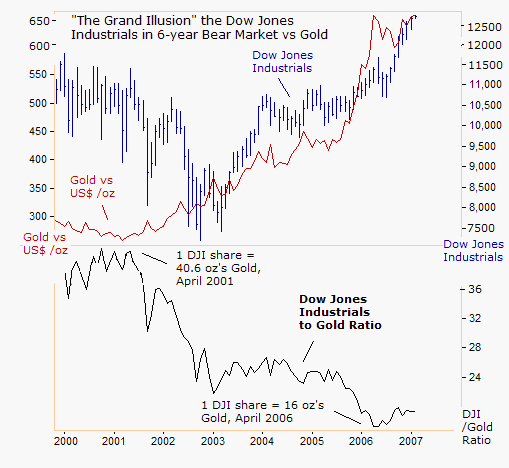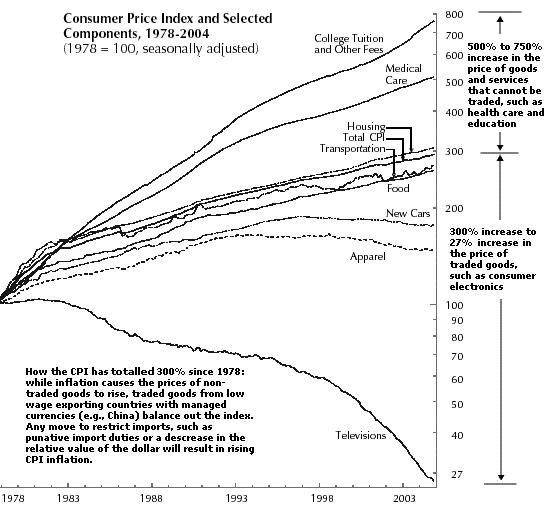

|
| weblog/wEssays archives | home | |
|
Retiring in an Era of Declining Purchasing Power (June 11, 2007) I asked frequent contributor Harun I. to briefly address a topic which has long concerned him: the impact of our declining purchasing power on those with fixed incomes, and what hedging strategies they might use to lessen such losses. In terms of what one share of the Dow Jones Industrial index buys in commodities, the "new highs" in the stock market are nowhere near new highs in actual purchasing power; our dollars buy less and less actual goods, despite the endless cheerleading we are constantly bombarded with about "low inflation" and "the strong dollar." Here is a chart which prices the Dow Jones Industrials Average in gold as well as dollars: 
One key concept here is the idea of hedging one's retirement income by buying and holding gold and/or non-dollar currencies, and prudently purchasing commodities or energy futures as hedges. In other words: by moving dollar assets to gold and other currencies, and purchasing futures, you may be able to retain far more purchasing power than if you left your nestegg in dollars or dollar-denominated bonds. Here are Harun's comments, which reference an Excel spreadsheet that opens in a second window. (Mac and Linux users: if the link doesn't open, please download the file and open it in the appropriate software.) If you study the spreadsheet you will notice that, if you retired with 1 million dollars in 1986 you would have had pretty good purchasing power. Left un-hedged that purchasing power dropped off dramatically. I didnít adjust for any interest received because at these numbers it wouldnít have mattered much. Even if you had 1 million is bonds at 6% throwing off 60K/yr., you are still living on a fixed income. I didnít adjust for taxes or commissions either.For another perspective on the loss of purchasing power, here is a chart of the Consumer Price Index components, 1978 - 2004: 
For more on this subject and a wide array of other topics, please visit my weblog. copyright © 2007 Charles Hugh Smith. All rights reserved in all media. I would be honored if you linked this wEssay to your site, or printed a copy for your own use. |
||
| weblog/wEssays | home |